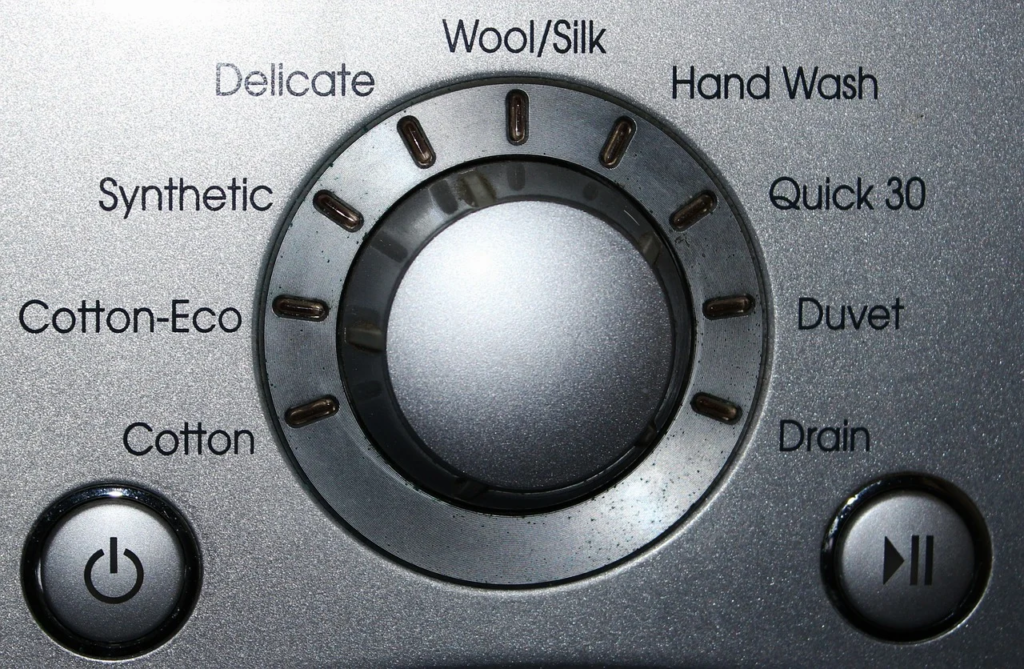How to find the best washing machine and which brand of a washing machine is best! One example is the cost of running a machine: it may be better to spend more upfront to get cheaper running costs, saving you money over the lifetime of the machine.
We’ll take you through everything that’s important about choosing a best washing machine and all of the key specifications that you should look out for – although, depending on your budget, you may opt to compromise on some.
- Types of washing machine explained
- Features of a good washing machine
- Washing machine programmes explained
- Washing machine features to look out for
- How we test washing machines
Types of washing machine explained
1. Freestanding washing machines
This is the most popular type in the category of the best washing machines. A freestanding machine isn’t built into your cupboards but is flexible enough to be used in different locations. The standard dimensions are built to fit under most kitchen worktops.
2. Integrated washing machines
These machines are designed to be installed within a kitchen unit and hidden behind a door that matches your other cupboards. Integrated options can be pricier and slightly smaller than freestanding machines. They can be quieter, though, as the cupboard door can muffle the noise.
3. Semi-integrated washing machines
These can also cost more than freestanding models. The control panel is visible, while the drum is hidden behind a door. You’ll need a door panel from your kitchen supplier to match your kitchen units.
4. Washer-dryers
Buying both a washing machine and a tumble dryer can be pricey and take up a lot of space. This is where washer-dryers come in handy. These two-in-one models can be a great solution if you’re looking for the best washing machine to do it all.
The “washer” part works like any standard washing machine, while the “dryer” part works like a heat-pump tumble dryer.
On test, we’ve found washer-dryers usually aren’t as good as a separate washing machine and dryer. They can have drying capacities that are half – if not more – than their washing capacity. So while you may be able to wash 10kg, you might only be able to dry 4kg in the same machine.
Features of a good washing machine
1. Drum sizes
Washing machines are more effective and energy-efficient when full, so it’s good to think about how much washing you’ll be doing. Drum capacities range from 3 kg up to 12kg, and this weight refers to dry clothes that can fit in the drum. Many machines have 8 kg to 10kg of space. This is a great size for large families or those who like to do their washing all at once. How much you can put in will also depend on the programme you’ve selected. Drum sizes are always take into account while manufacturing the best washing machines.
2. Spin speed
The faster the spin, the more water is removed, and clothes don’t have to be in a tumble dryer or out on the washing line for as long. This feature is always important in the best washing machines. While speeds are worth considering, any machine with a range between 400 to 1,400rpm will do the job well. Some top-of-the-range models can spin up to 1,800 rpm on a cotton program, but faster spin speeds can be more costly and are usually noisier too.
3. Energy efficiency
If you’re buying a new machine, look at the energy efficiency rating label stuck on the side of the machine. This shows you how economical it’ll be. The rating will be between A to G, with A-rated models being the most energy-efficient. Newer models are more efficient, so you will also see ones with A+++, A++ and A+ ratings. It helps buying the best washing machine.
Washing machine programmes explained

All the best washing machines often have the same standard programmes included. Some brands, though, include extra cycles for specific washes. When choosing the programme, you have to keep in mind the recommended temperatures and spin speeds for your different fabrics. Here are what some of the most common washes do:
1. Quick wash
This can be as short as 15 minutes for a complete wash cycle. It’s only really designed to freshen up the load – don’t expect it to remove stains.
2. Economy:
This programme may reduce the wash temperature but extend the length of cycle to compensate.
3. Hand wash:
This is great for machine washing delicate fibres and knitwear that you would normally wash by hand. It reduces the drum agitation during the wash and spin cycle and washes at a lower temperature.
4. Extra rinse:
This setting allows you to increase the number of rinses. It can be very useful, especially if you have allergy sufferers or people with sensitive skin in the family. The best washing machines should have this feature.
5. Hot wash:
This usually runs at 60C or higher temperatures and it’s the best setting for removing tough stains and sterilising clothes.
Washing machine features to look out for
1. Delay start:
Choose the most convenient time to start drying your load.
2. Rinse hold/Crease guard:
This feature means that if you aren’t around at the end of the program, the laundry won’t be left to crease for too long. The machine holds the laundry in the final rinse water and the spin must be manually selected to progress to the end of the program.
3. Smart control:
This allows your machine to connect to your household wifi, meaning you can remotely set your washing machine settings and start time via an app.
4. Automatic dosing:
This feature works out how much detergent you need for each wash. You just have to fill the reservoir and the machine will add the right amount each time.
5. Sensor technology:
The latest, most advanced and the best washing machines have intelligent sensors to work out the weight and the fabric in your wash load and adjust the time and water usage for the best results.
6. Samsung “AddWash” feature:
The clever AddWash feature from Samsung means forgotten items or softener can be added at any time to a drum that is below 50C or if an item only needs a rinse and spin, they can be popped in towards the end of the cycle.
7. Samsung “Ecobubble” technology:
This is another feature found on newer Samsung models which makes them the best washing machine. It works by mixing air, water and detergent to create bubbles that penetrate your laundry. It’s good for lower temperature programs.
Installation
If you’re buying from a reputable retailer that’s delivering the machine, they should be able to install it for you. They should also offer to collect and recycle your old one for free or for a small fee.
How we test the best washing machines
To put washing machines to the test, we wash an everyday load of clothes, bedding and towels on the cotton and synthetic programs. We then score the results, judging the best washing machine on the weight of the laundry before and after washing, taking into account the spin efficiency, how long it took, and how much water and energy it used. We also check how much clothes have creased.
We use a pH meter to check the alkaline level of the water and the dilution of the detergent. We also add stain strips to each wash to measure how well it removes stains on both the cotton and synthetic programs. Throughout the test, we assess the design and ease of use too. Special innovation features, such as Wi-Fi connection, self-diagnosis for any faults and dedicated settings for specific stains are also taken into account while testing the best washing machines.







